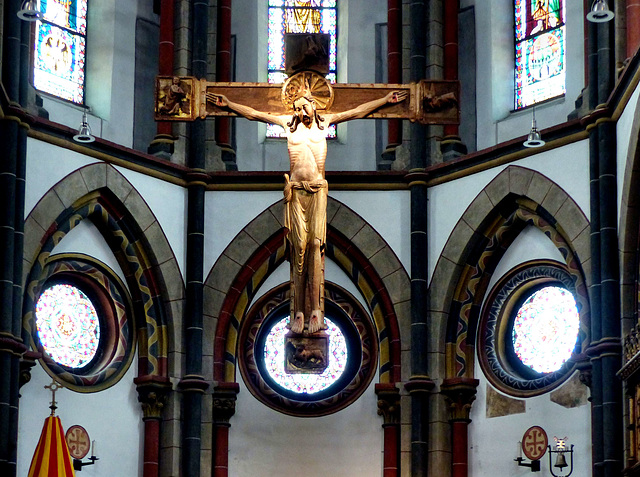Boppard - St. Severus
Boppard - St. Severus
Boppard - St. Severus
Andernach - Runder Turm
Andernach - Burg
Andernach - Rheintor
Andernach - Haus von der Leyen
Andernach - Christuskirche
Andernach - Christuskirche
Andernach - Maria Himmelfahrt
Andernach - Maria Himmelfahrt
Andernach - Maria Himmelfahrt
Andernach - Maria Himmelfahrt
Andernach - Maria Himmelfahrt
Andernach - Maria Himmelfahrt
Andernach - Maria Himmelfahrt
Andernach - Maria Himmelfahrt
Andernach - Maria Himmelfahrt
Andernach - Maria Himmelfahrt
Cologne - Tsunami Club
Cologne - Der Bootsmann
Cologne - Bottmühle
Cologne - Do not eat me!
Boppard - St. Severus
Boppard - St. Severus
Boppard - St. Severus
Boppard - St. Severus
Boppard - St. Severus
Warburg - Bubblegum
Thalitter - Bubblegum
Bottendorf - Bubblegum
Josbach - Bubblegum
Mardorf - St. Hubertus
Mardorf - St. Hubertus
Mardorf - St. Hubertus
Mardorf - St. Hubertus
Mardorf - St. Hubertus
Greding - St. Martin
Greding - St. Martin
Greding - St. Martin
Greding - St. Martin
Greding - St. Martin
Greding - Michaelskapelle
Greding - St. Martin
Greding - St. Martin
Location
See also...
Keywords
Authorizations, license
-
Visible by: Everyone -
All rights reserved
-
102 visits
Boppard - St. Severus


Boppard (known in Roman times as Vicus Baudobriga) lies on the Rhine Gorge, a UNESCO World Heritage Site since 2002.
After the end of the Roman Empire the population continued to live in the former Roman fort, that in the 5th century became a Merovingian royal seat. A century later a predecessor of today's St. Severus Church was built from the remains of the abandoned Roman bath. In medieval times Boppard was often visited by the German kings, who then resided in the royal court.
Excavations proofed that the early Christian church from the 6th century was a 9 × 32 meter church room with a small apse to the East. This church burnt down in the 10th century and got replaced by a smaller building. Around 1000 canons had formed a collegiate and cared for the pastoral needs.
Today´s St. Severus church was erected in the 12th and 13th centuries. The two church towers date from the middle of the 12th century (the helmets are from the 17th century), the nave was built at the beginning of the 13th century and its likely completion is dated to 1225. The choir finally dates to around the year 1234.
The triumphal cross is 285 cm high and 248 cm wide. It was masterly created around 1220/1230. Christ does not wear a crown of thorns but a royal crown that characterizes him as the victor over death.
Seen to the left is the top part of the umbraculum. The symbol is bestowed by the pope when he elevates a church to the rank of a minor basilica.
After the end of the Roman Empire the population continued to live in the former Roman fort, that in the 5th century became a Merovingian royal seat. A century later a predecessor of today's St. Severus Church was built from the remains of the abandoned Roman bath. In medieval times Boppard was often visited by the German kings, who then resided in the royal court.
Excavations proofed that the early Christian church from the 6th century was a 9 × 32 meter church room with a small apse to the East. This church burnt down in the 10th century and got replaced by a smaller building. Around 1000 canons had formed a collegiate and cared for the pastoral needs.
Today´s St. Severus church was erected in the 12th and 13th centuries. The two church towers date from the middle of the 12th century (the helmets are from the 17th century), the nave was built at the beginning of the 13th century and its likely completion is dated to 1225. The choir finally dates to around the year 1234.
The triumphal cross is 285 cm high and 248 cm wide. It was masterly created around 1220/1230. Christ does not wear a crown of thorns but a royal crown that characterizes him as the victor over death.
Seen to the left is the top part of the umbraculum. The symbol is bestowed by the pope when he elevates a church to the rank of a minor basilica.
- Keyboard shortcuts:
Jump to top
RSS feed- Latest comments - Subscribe to the comment feeds of this photo
- ipernity © 2007-2024
- Help & Contact
|
Club news
|
About ipernity
|
History |
ipernity Club & Prices |
Guide of good conduct
Donate | Group guidelines | Privacy policy | Terms of use | Statutes | In memoria -
Facebook
Twitter

Sign-in to write a comment.